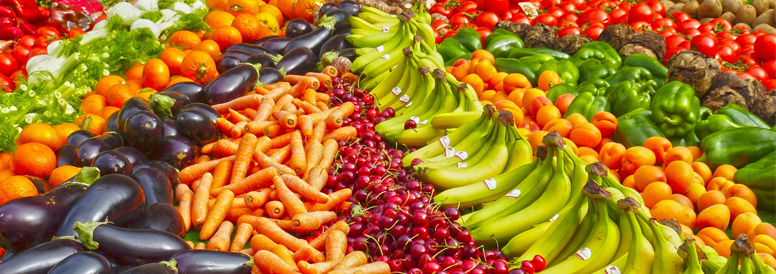Quercetin – What the Science Shows
Quercetin is a flavonoid that gives color to many fruits and vegetables. It’s found in apples, berries, broccoli, kale, shallots, capers, and tea. Another particularly rich source of quercetin is the outer skin of onions.
Many people are aware that research has shown quercetin helps stabilize the release of histamine from mast cells. Helping stabilize mast cells, however, is only one of quercetin’s many physiologic actions. Possibly the most widely studied of all dietary flavonoids, quercetin may support antioxidant defenses, healthy inflammatory balance, gut health, and more.
QUERCETIN AND ANTIOXIDANT DEFENSES
Like all dietary flavonoids, quercetin has potent antioxidant activity. Animal studies have shown that quercetin supports the production of the master cellular antioxidant glutathione. When quercetin was given to rats, it demonstrated an ability to help support a response to oxidative stress.
Human studies have also demonstrated a role for quercetin as an antioxidant. When compared with people taking a placebo, healthy individuals who consumed 1 gram of quercetin per day for 14 days experienced less lipid peroxidation of their red blood cells.
This two-week study also evaluated quercetin’s effect on antioxidant status after exercise. Compared with the placebo, quercetin supplementation supported healthy antioxidant defenses, as measured by lipid peroxidation and the ratio of reduced to oxidized glutathione.
Another human study found that quercetin modulated plasma levels of methylglyoxal (MGO), which is a potent precursor molecule of advanced glycation end products (AGEs). Quercetin’s ability to interact with the formation of AGEs opens up exciting possibilities for supporting cellular health and aging.
QUERCETIN AND INFLAMMATION
Studies performed in vitro, using various cell lines, show that quercetin supports a healthy inflammatory response. Animal studies have also shown that quercetin plays a role in supporting inflammation balance. In a rat model, quercetin supported the integrity of the colon cells and normal fluid transport. Other studies evaluating the effects of quercetin on the gut in rats have found that quercetin supports healthy inflammatory pathways.
Human studies related to quercetin and normal inflammation are quite limited. One study published in 2017 evaluated quercetin supplementation in women. This study found that eight weeks of quercetin supplementation at 500 mg per day supported joint function and healthy inflammation.
QUERCETIN AND HISTAMINE
Research studies have demonstrated that quercetin may help stabilize mast cells. Quercetin may also interact with histamine via additional mechanisms. Quercetin has been associated with the reduced expression of the H1 receptor gene.
Several studies in animals have found interactions between quercetin and histamine. One study found that histamine was supportive in a rat model. Another study evaluated quercetin in a mouse model and found that quercetin supported a normal, healthy histamine response.
But despite the compelling studies in animals and the widespread use of quercetin to support healthy mast cell function, there are no human studies to support its use for histamine support.
QUERCETIN AND THE GUT MUCOSA
Mast cells aren’t only present in the mucosal membranes of the respiratory tract, but also in the gastrointestinal tract.
Studies conducted in rats have found that physical or emotional stress leads to mast cell activation in the gut mucosal membranes. We don’t have much evidence that quercetin interacts with this process, but scientists hypothesize that quercetin’s ability to stabilize mast cells might help to support healthy intestinal barrier function.
Another way that quercetin interacts with the intestinal lining is by supporting tight junctions. These junctions connect the intestinal cells so that only nutrients are allowed to pass into circulation, while keeping other molecules inside the intestinal lumen. Quercetin has been shown to support the assembly of tight-junction proteins and, therefore, intestinal barrier integrity.
In a mouse model, administration of quercetin and other polyphenols supported a healthy inflammatory response and intestinal barrier function.
The mechanisms that suggest quercetin might support healthy inflammatory pathways and intestinal barrier function in the gut are intriguing. Unfortunately, there are no studies in humans to evaluate the role of quercetin in gut health.
QUERCETIN BIOAVAILABILITY
The compelling health benefits of quercetin may be limited by poor absorption and bioavailability. Studies suggest that when people consume 100 mg of quercetin, the absorption rate is only between 3 percent and 17 percent.
A more absorbable form of quercetin has recently been developed. Quercetin phytosome is created via a patented process that binds quercetin to phospholipids. The result is a compound that can lead to quercetin plasma levels up to 20 times higher than other quercetin ingredients.
QUERCETIN USE AND SAFETY
The typical amount of quercetin used in human studies is 500 mg once or twice a day. Quercetin has a good safety record in human studies in amounts as high as 1,000 mg per day and for durations of up to 12 weeks. There’s not enough evidence to make any claims of safety during pregnancy or lactation.
Quercetin might interact with cytochrome P450 enzymes in the liver to slow the metabolism or breakdown of some medications. Always check for potential nutrient and drug interactions before recommending quercetin or any other supplements.
Based on the evidence in human and animal studies, it’s reasonable to consider quercetin as part of integrative protocols to support healthy immune and gut function.

